
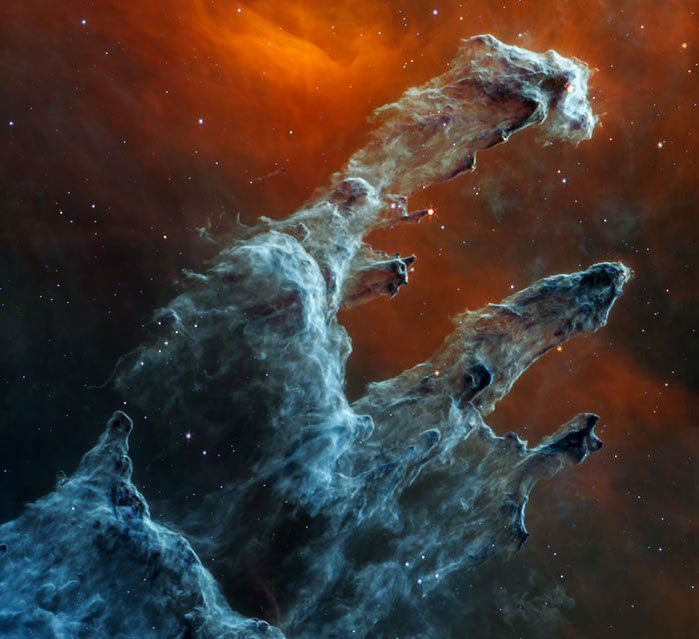
The pillars in this image of the Eagle nebula from the James Webb Space Telescope are the sites where future stars will be born in this stellar nursery. The next couple of images are from the Hubble Space Telescope and zoom in on the ends of the pillars.
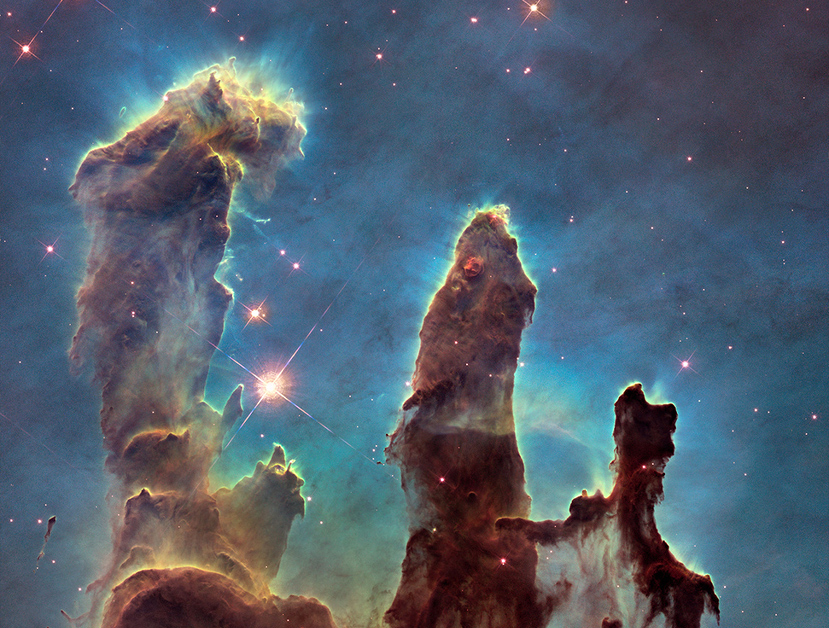
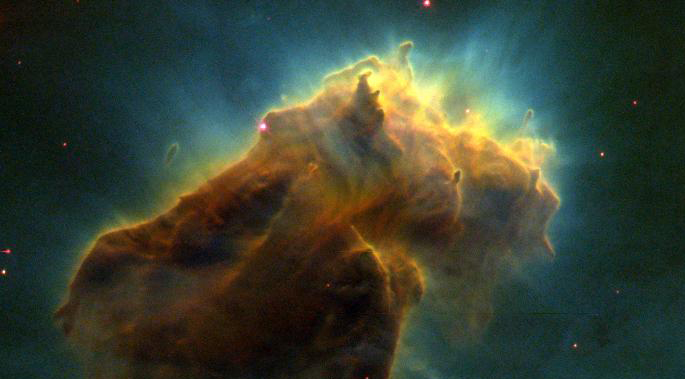
Image source hubblesite.org/gallery/album
These "stellar EGGs" (Evaporating Gaseous Globules) sit atop a column of cool molecular hydrogen gas and dust that is slowly eroding away under the force of photoevaporation, an effect of the photons in the stellar wind.
The photograph was taken by Hubble Space Telescope Wide Field and Planetary Camera 2 on April 1, 1995. The image is actually a composite image in three different wavelengths of light, with different colors assigned to the various wavelengths. Emission from singly-ionized sulfur atoms is shown in red, while hydrogen emission is shown in green and doubly-ionized oxygen is shown in blue.
animation

These protostellar systems, encased in shrouds of gas and dust, are called proplyds. The image above, taken by the Hubble Space telescope, shows one such proplyd in the Orion nebula, some 1400 light years away.
The above animation from the Hubble Telescope group, shows what it might look like to fly by the Herbert-Haro object HH24, a newborn star with two immense cosmic jets emanating from its rotation axis. The jets are created when superheated material in the inner part of the disk falls onto the star. Some of the material is caught by the magnetic field as it nears the star and is columnated by the field, directed away from the star.
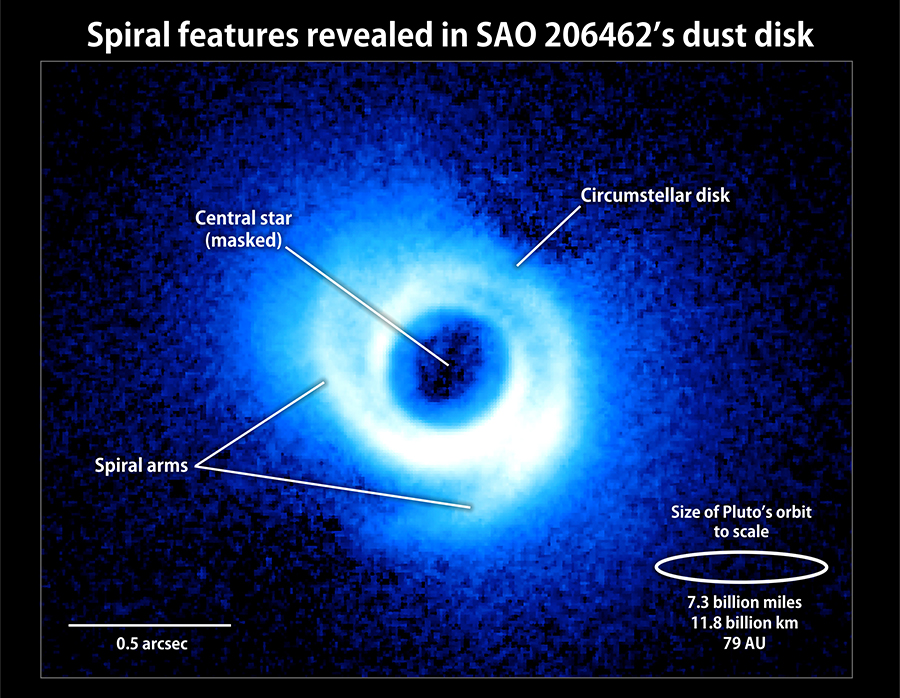
This image of a protostellar disk reveals spiral arm structure in the disk, generated by gravitational instabilities. These formations resemble spiral arms in a galaxy, and rotate relatively intact around the central star. The dark region in the middle of the system was masked to subdue the bright light from the star, so that the disk features could be seen.


}
T Tauri star

The T Tauri stage of star formation is named for a prototype of the class in the Taurus constellation. T Tauri stars do not yet have high enough temperatures for fusion to happen in their cores, but even so, they are much more luminous than they will be later on, when they are fusing hydrogen into helium. As the protostar evolves, it contracts under the pull of gravity. Since it is compressing, the gas particles are forced together more tightly and are moving faster, raising the temperature. It is this very hot, glowing gas that gives the T Tauri protostars their high luminosity. They also begin to show an "edge" or photosphere, where the inner, opaque material transitions to transparent material over a relatively short distance, similar to the photosphere in the sun.
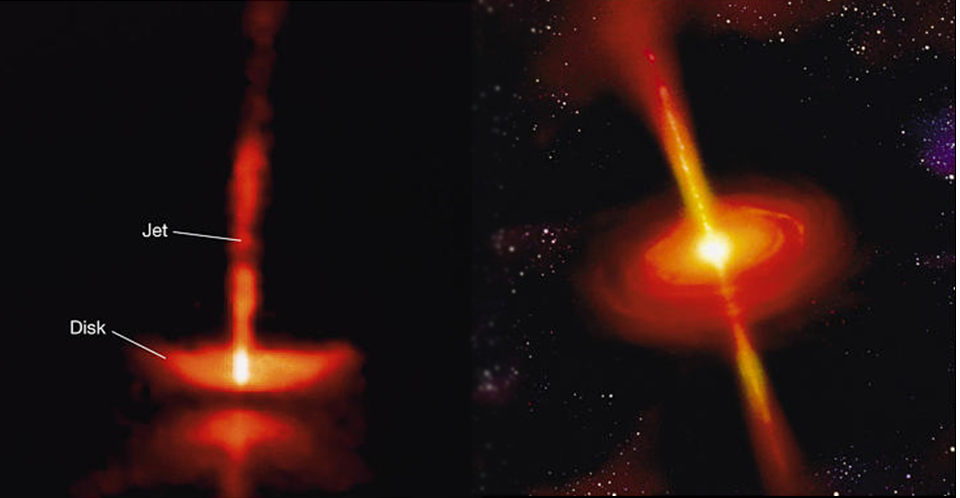
© 2005 Pearson Prentice Hall, Inc.
These T Tauri stars clearly show outflow jets along the rotation axes of their circumstellar disks.
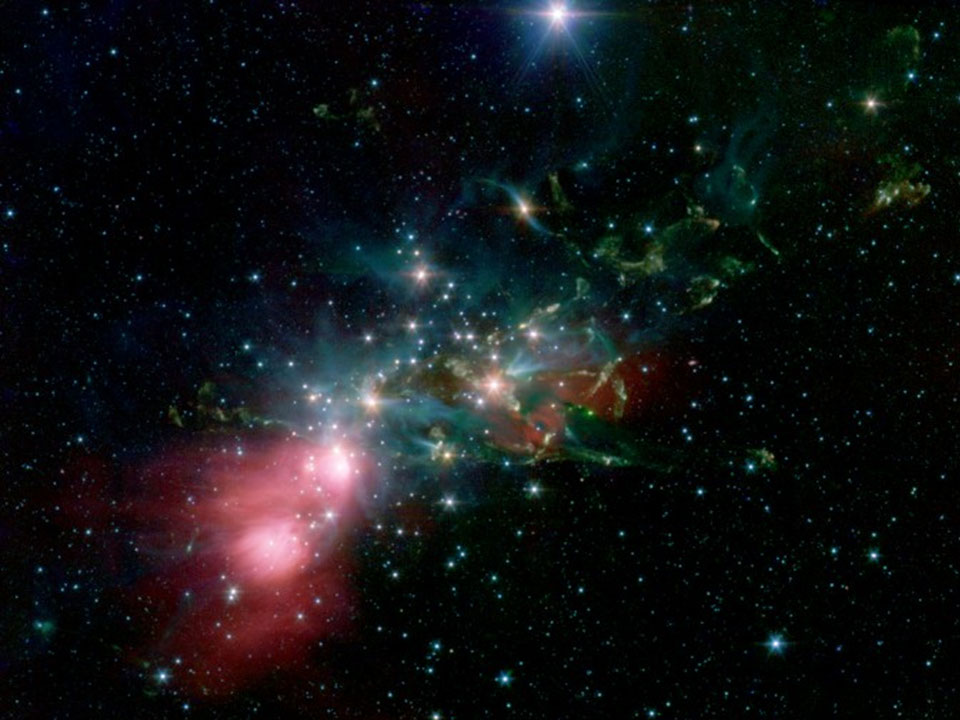
This cluster of young stars in NCG 1333, a reflection nebula 1000 light years away, in the constellation Perseus, was photographed by the Spitzer Space Telescope. The green streaks are actually infrared light colored so that we can see it, and show cosmic jets emitted from this group of young stellar objects.

Image source
These "Pillars of creation" are dense material that has been sculpted into shape by the fierce stellar winds of nearby newborn stars. In the same way as rock spires in the desert take on interesting shapes from the erosion caused by high winds, these pillars are eroded by the local stellar wind.